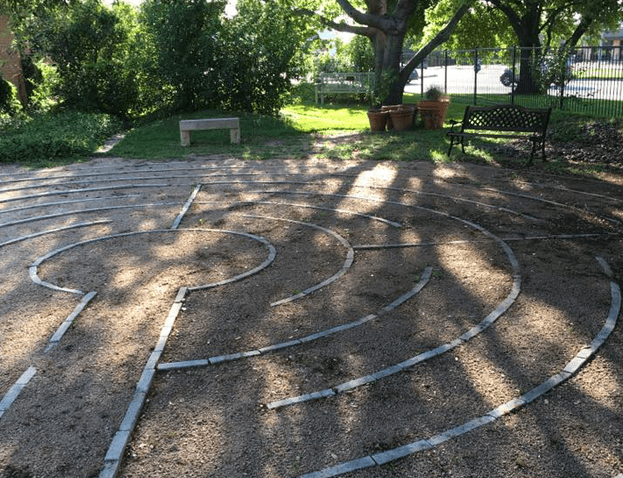Donate Your Vehicle to UFW
Support your spiritual home and show Unity Fort Worth some love by donating your unwanted vehicle to us. We’ll pick it up at a time that’s convenient for you.
The CARS Vehicle Donation Program also accepts all types of donated vehicles. While cars are the most frequently donated vehicle, don’t forget trucks, RVs, motorhomes, motorcycles, and boats!
Visit https://careasy.org/nonprofit/unity-center-of-fort-worth to fill out a donation form, or call 1-855-500-RIDE (7433) to speak with a representative today. They will walk you through the process every step of the way. Thank you for supporting Unity Fort Worth!
UFW’s Totem Pole
The Significance of the Totem Pole
Totem is a Native American word for a natural object serving as the emblem of a family or group passed from one generation to the next. Carved from mature cedar trees by the native people of the Northwest, full-size totem poles were raised to represent a family clan, its kinship system, dignity, accomplishments, prestige, adventures, stories, rights, and prerogatives. The taller the totem, the more abundant the clan was thought to be.
Unity Fort Worth’s totem pole, lovingly carved and donated by Nona and Max Meinen, was created over a period of 1.5 years from a cedar tree that was inadvertently felled by the gas company who had the right to place a gas pipeline across their property.
The First Phratry: The Thunderbird
The first phratry is a thunderbird, which was believed by the Native Americans to be Grand Lord of the Sky Realm. It is always very prominent, done in very bright colors, and has large and wide outstretched wings. This means sending out love to all people who pass, and particularly to those in our church community.
The Second Phratry: The Beaver
The next phratry is a beaver, used because of his industriousness. Some Native Americans believe that, if provoked, beaver might dig underground tunnels that could cause earthquakes and landslides.
The Third Phratry: The Raven
Next in line is the raven. Native Americans quite often used raven because they believe he could turn darkness into light. Raven was also thought to be powerful, ever curious, deviant, compulsive, but at the same time likable.
The Fourth Phratry: The Bear
Connected to raven is the bear. Bear is usually at the base of a totem because of his strength. Some Native Americans also believe he had the power to make fire with wet sticks (Bear wood). Bear is holding in his arms a salmon. Of course, in the Northwest it is common for bears to catch and eat salmon. Fish were also known for their agility and dexterity.
Max and Nona Comment
“To us, the totem pole, because the phratries, is all connected, and reminds us of the Unity principle that we are all connected! It was our pleasure to carve this meaningful totem pole for our church garden, and it is our hope that it will remain for generations to come as a beacon for love and light and as a reminder of the native people who occupied this land before us.”
—Nona and Max Meinen, September 21, 2008
The totem pole is located in the Peace Garden next to the labyrinth.
Some of the markings on the pole and the eyes of the animals are done in Haida style. The ideas of the phratries were taken from a book “How to Carve and Paint Totem Poles” by Paul N. Luvera, Sr.
Walking the Labyrinth
With a labyrinth, there is only one choice to be made. The choice is to enter or not—whether or not to walk a spiritual path. The labyrinth is a model of that path, as well as an ancient symbol that relates to wholeness. Labyrinths have long been used as meditation and prayer tools.
A labyrinth is a metaphor for life’s journey. It is a symbol that creates a sacred space and place and takes us out of our ego to “that which is within.” Think of it as a journey to the center of your deepest self and back out into the world with a broadened understanding of who you are.
There is no right way to walk a labyrinth
You only have to enter and follow the path. However, your walk can encompass a variety of attitudes. It may be joyous or somber. It might be thoughtful or prayerful. You may use it as a walking meditation. Most of all, pay attention to your experience.
Some Suggestions for Walking the Labyrinth
Focus: Pause and wait at the entrance. Become quiet and centered. Give acknowledgment through a bow, nod, or other gesture, and then enter.
Experience: Walk purposefully. Observe the process. When you reach the center, stay there and focus for several moments. Leave when it seems appropriate. Be attentive on the way out.
Exit: Turn and face the entrance. Give an acknowledgment of ending, such as “Amen.”
Reflect: After walking the labyrinth, reflect back on your experience. Use journaling or drawing to capture your experience.
Walk often.
Three Fold Path Method
Releasing (Purgation). From the entrance to the goal is the path of shedding or “letting go.” There is a release and an emptying of worries and concerns.
Receiving (Illumination). At the center, there is illumination, insight, clarity, and focus. It is here that you are in a receptive, prayerful, meditative state.
Integrating (Union). Empowerment and taking ownership. The path out is that of becoming grounded and integrating the insight. It is being energized and making what was received manifest in the world.
“Palms Up, Palms Down” Method
These three stages can be symbolized with a “palms down, palms up” approach to walking the labyrinth.
“Palms down” symbolizes release or letting go while “palms up” indicates receiving. Enter the labyrinth and walk to the center with palms down and center your thoughts on releasing conflicting issues and concerns in your life. When you reach the center, turn your palms up to be receptive to insight. As you walk out of the labyrinth, keep your palms up to receive strength and guidance to make your insight manifest. As you leave the labyrinth, turn to face the center and bring your palms together for a prayerful end to your walk.
Davis Hoffman-Roach
March 3, 1948–July 31, 2003
It is with great sadness that we acknowledge the death of Davis, wife of Reverend Paul John Roach, in the summer of 2003. She was an integral part of the church for fifteen years and we know that her spirit of creativity and love will continue to bless us in the years ahead.
Davis and Paul came to Unity Fort Worth in September 1988 when it was a small and struggling community. From the beginning, Davis shared her gift of leading meditations and being a calm graceful presence on Sunday mornings. At the time, she was heavily involved in her own career as a speech pathologist, as well as minister’s wife.
Over the years, her involvement in Unity increased. She gave ever more inspiring sermons, she established our drama ministry, Unity Players, and wrote and directed ten plays. She also wrote and directed children’s plays at Christmas and Easter.
Davis liked to say that she served in every aspect of the church’s life from youth education director, to singer in the Unity Singers and ensembles, to volunteer in the office and garden, to Paul’s most important and ever faithful support.
For many years, the Language Action Center, a day group for the head injured which Davis directed, met at the church. It was a vital and important work.
Permanent Endowment for Oncology Nurses and Davis’ Bench
As part of Davis’ legacy, an endowment fund was set up through Cancer Care Services to benefit oncology nurses in Tarrant County. The endowment provides for continuing training, days of renewal, volunteer help, etc. Thanks to memorial gifts and donations from friends and supporters, the fund received over $21,000.
Each year an award is given in Davis’ name to the Oncology Nurse of the Year at the annual Cancer Care Services dinner. In addition, plans are underway to support oncology nurses through holistic programs and other ventures.
If you would like to make a donation to this endowment in honor of Davis and in celebration of the work of oncology nurses in our area, you can send a gift directly to Cancer Care Services (specify its use).
Paul and Miriam installed a bench in honor of Davis Hoffman-Roach on a beautiful stretch of the Trinity River between Bailey Street and University Drive. The bench was consecrated at a ceremony held by friends of Davis on the first anniversary of her death on July 31, 2004.








